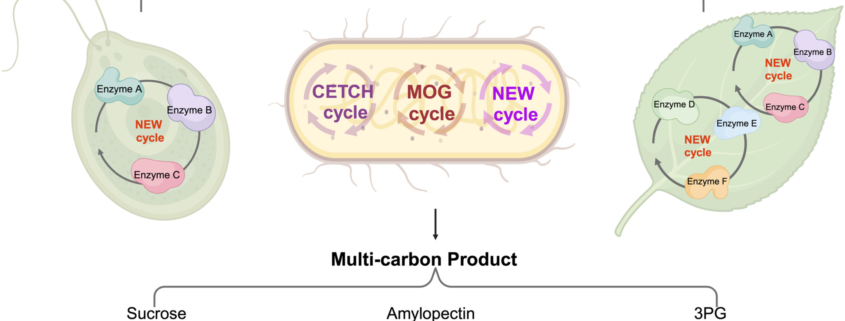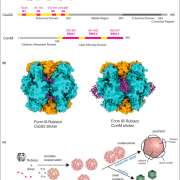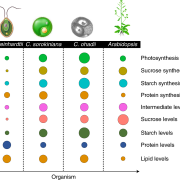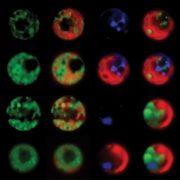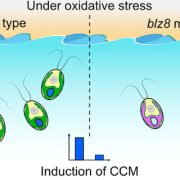Review: Genetic engineering for carbon assimilation in plants
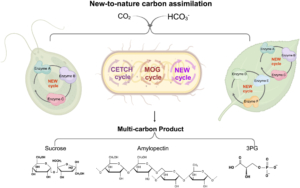 Rubisco (Ribulose‐1,5‐bisphosphate carboxylase/oxygenase) is the central enzyme for photosynthesis, This enzyme poorly discriminates between CO2 and O2, which limits its efficiency. To work around this and make carbon assimilation more efficient, scientists have been employing different engineering strategies, several of which are summarized in a new review by Qin et al. One strategy is to alter Rubisco activity, for example by inducing mutations, combining parts of Rubisco from different organisms, engineering other enzymes involved with Rubisco activation and accumulation, and introducing Rubisco genes from lower organisms to crop plants. Another engineering approach is to create carbon-concentrating compartments, for example by using carboxysomes found in cyanobacteria and pyrenoids from eukaryotic algae. Alternatively, CO2 levels at Rubisco can be boosted by introducing the C4 cycle in C3 plants. Scientists are also engineering the Calvin-Benson-Bassham Cycle by overexpressing specific enzymes involved in the cycle, as well as adding photorespiratory bypasses to reduce carbon loss due to photorespiration. Lastly, work has been done to design a new artificial carbon assimilation cycle by using deep learning and synthetic biology. Synthetic biology approaches can also aid in developing artificial enzyme complexes that could improve photosynthesis in plants. (Summary by Mae Mercado @maemercado.bsky.social) J. Integr. Plant Biol. https://onlinelibrary.wiley.com/doi/10.1111/jipb.13825
Rubisco (Ribulose‐1,5‐bisphosphate carboxylase/oxygenase) is the central enzyme for photosynthesis, This enzyme poorly discriminates between CO2 and O2, which limits its efficiency. To work around this and make carbon assimilation more efficient, scientists have been employing different engineering strategies, several of which are summarized in a new review by Qin et al. One strategy is to alter Rubisco activity, for example by inducing mutations, combining parts of Rubisco from different organisms, engineering other enzymes involved with Rubisco activation and accumulation, and introducing Rubisco genes from lower organisms to crop plants. Another engineering approach is to create carbon-concentrating compartments, for example by using carboxysomes found in cyanobacteria and pyrenoids from eukaryotic algae. Alternatively, CO2 levels at Rubisco can be boosted by introducing the C4 cycle in C3 plants. Scientists are also engineering the Calvin-Benson-Bassham Cycle by overexpressing specific enzymes involved in the cycle, as well as adding photorespiratory bypasses to reduce carbon loss due to photorespiration. Lastly, work has been done to design a new artificial carbon assimilation cycle by using deep learning and synthetic biology. Synthetic biology approaches can also aid in developing artificial enzyme complexes that could improve photosynthesis in plants. (Summary by Mae Mercado @maemercado.bsky.social) J. Integr. Plant Biol. https://onlinelibrary.wiley.com/doi/10.1111/jipb.13825


